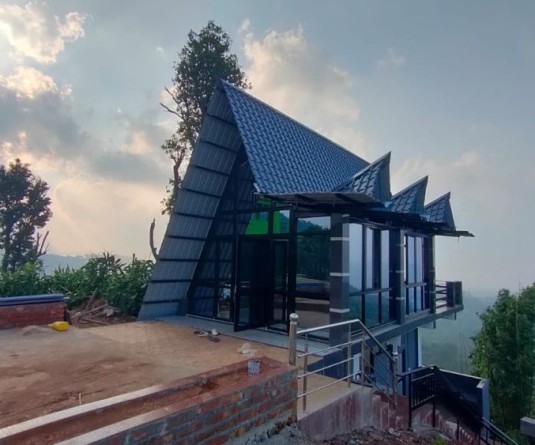The Nagaland Health Department has made a proposal to declare CIHSR as a COVID-19 Hospital.
.jpg)
CIHSR Director stresses on ‘convergence’ and streamlining of resource allocation
Morung Express News
Dimapur | May 13
With private hospitals in Dimapur yet to come to a clear arrangement with the Nagaland State Government on admitting COVID-19 patients, the Christian Institute of Health Sciences & Research (CIHSR), is the only other hospital apart from District Hospital Dimapur (designated as COVID-19 Hospital), to admit and treat COVID-19 patients in the district.
CHISR, a tripartite partnership of Christian Medical College Vellore, Emmanuel Hospital Association (EHA) and the State of Nagaland, started admitting and treating COVID-19 patients since last year, after it opened a COVID-19 ward and ICU.
Director, CIHSR, Dr Sedevi Angami, told The Morung Express that the hospital has currently 18 ICU beds, and 43 general isolation beds reserved for COVID-19 patients. In addition to this, the hospital has also set aside 15 beds for its staff, as many of them fall sick after attending to COVID-19 patients, Dr Sedevi said.
The CIHSR Director also informed that they were planning to increase the number of beds for COVID-19 cases.
On May 12, the Principal Director of Health & Family Welfare, Dr Neikhrielie Khimiao, told the media that the department had made a proposal to the State Government to declare CIHSR as the next COVID-19 hospital in Dimapur district.
On the hospital’s infrastructure and manpower resources, the CIHSR head informed that the hospital has at present 38 oxygen-supported beds. “This will increase as we get oxygen concentrators. We need more cylinders and a higher capacity oxygen generating plant,” he said.
He further informed that while the hospital has adequate number of doctors, the main bottleneck is in the number of nurses. “We need back up for all the staff who fall sick while treating patients,” Dr Sedevi said.
“Communication is an issue. This is quite difficult since the stress levels both among relatives and the exhausted medical staff are very high,” he added.
He informed that last year, 84 nurses from CIHSR resigned during the COVID season and several of these nurses joined government service, which rapidly depleted the hospital’s work force.
“Oxygen is a major challenge. Cylinders are not available in the market. Oxygen gas pipelines take weeks to install. Concentrators need uninterrupted electricity which is difficult with constant load shedding,” he disclosed.
He also informed that the support staff are needed to take care of the huge biomedical waste generated, shifting patients to toilets etc, constantly changing oxygen cylinders round the clock, providing physical and encouragement support to the medical staff to keep their morale high and preventing burnout, and ensuring that drugs and essential supplies do not run out in the midst of sudden spurts in demand.
He underscored the need for coordination and teamwork between all the various units working for the patients.
“There needs to be good teamwork between the government, private sector, media, Church and civil society and this needs to be backed up by expert advice from seasoned medical administrators who can think very fast on their feet,” Dr Sedevi said when queried on the need of the hour.
He further stressed on the need for streamlining resource allocation and added, “in any disaster situation, you will get huge wastage in certain areas and severe shortages in other areas. This needs excellent coordination and logistical planning.”
“Traditionally in India, private sector, government and institutions work in silos. This is a great wastage of resources. The government has learnt the term convergence after a lot of bitter lessons. This convergence must take place between private sector, government and institutions as equal partners with mutual respect,” the CIHSR director said.
If convergence takes place, then society can get the best of government infrastructure and machinery, the speed and innovation of the private sector and the intellectual sharpness, objectivity and insight of institutions, he said.






